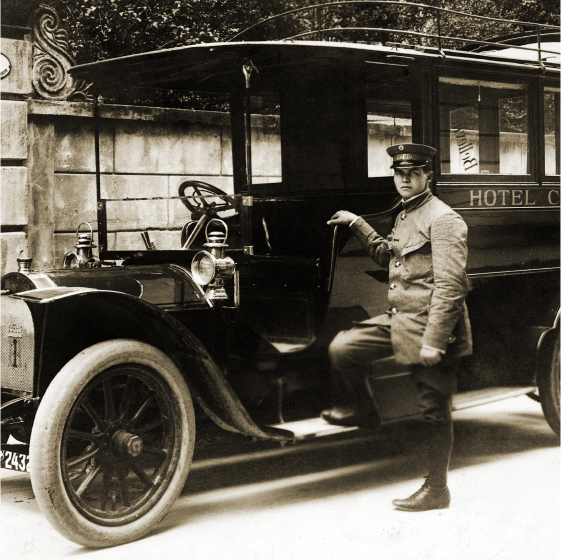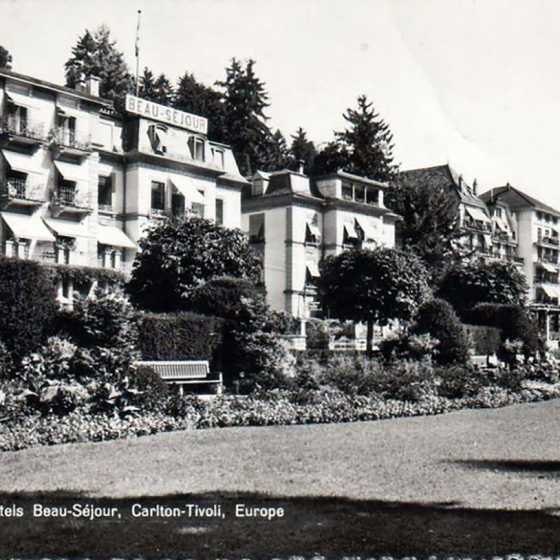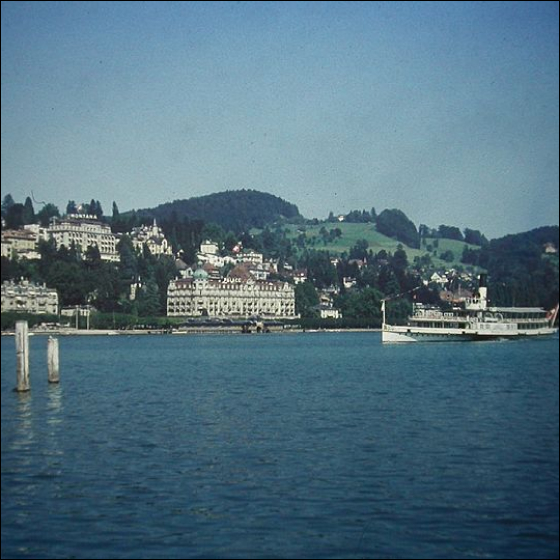Haldenstrasse
At the beginning of the 19th century, Haldenstrasse was a sparsely inhabited street. But by the late 1860s, a lively spirit of enterprise could be felt there. The construction of the two residential buildings at Haldenstrasse 53 and 55 dates back to 1871. And in 1875, the engineer Otto Gelpke opened the Gesegnetmatt boarding house. A four-story extension in 1905 created the shape of Hotel Beau Séjour as we know it today. The neighboring building at Haldenstrasse 55 served as an annex of the Gesegnetmatt boarding house from about 1905 until World War I in 1914. Hence the double name: Hotel-Pension Pilatus & Gesegnetmatt.
The founding of Beau Séjour in 1922
In 1922, our beautiful hotel was finally named "Hotel-Pension Beau-Séjour au Lac". It is one of the few small hotels that have come out of all the crises to hit the hotel industry unscathed.
The historic Villa Wilhelmina
Right behind us, in the three-story two-family house at Gesegnetmattstrasse 12, lived the writer Carl Spitteler from 1892 until his death in 1924. Spitteler was the only other Swiss writer to win the Nobel Prize for Literature aside from Hermann Hesse. He married a former student, the Dutchwoman Marie Op den Hooff, who came from a wealthy family. The house, called Villa Wilhelmina (after Spitteler's mother-in-law), was built by his father-in-law. They all lived in the house together. Later, Carl Spitteler acquired additional land next to the villa and made a botanical garden. Today, the upper part is quite altered. Nonetheless, there is still an Italian air emanating from behind Hotel Beau Séjour.
The Carl-Spitteler-Quai directly in front of the Beau Séjour
Carl Spitteler became an honorary citizen of the city of Lucerne as early as 1909. After his death, the Carl-Spitteler-Quai and -Park was dedicated in his honor in 1925. The artist Roland Duss created the bronze sculpture and female nude "Die Liegende" in his memory in 1940. At that time, many citizens were outraged by this "naked and casually lying there" female figure. Several times she was smeared with paint and once even completely dressed. The perpetrators are unknown to this day.
Hotel Montana left behind the Beau Séjour
In 1910, the Hotel Montana was built on the site of the former "Nidlenpalast", a dairy and milk shop. The building was considered avant-garde and yet was disparaged by an art historian as a "pile of stones". The initiator was Alfred Schrämli-Bucher (1867-1932). He in turn was the son-in-law of Franz-Joseph Bucher. In his search for a suitable building site, Schrämli offered the city of Lucerne 1 million francs for the area next to the Hotel National, later Kurplatz. In doing so, he provoked opposition from Lucerne's hoteliers, who subsequently formed the newly founded Hotelier-Verein, of which Franz-Joseph Bucher was nota bene one of the co-founders. In 1908, Schrämli was able to acquire the former alpine dairy "Nidlenpalast" for the construction of the Hotel Montana, with a wonderful view of his father-in-law's Hotel Palace. With the construction of the hotel, a funicular railroad was also put into operation, which was considered the shortest funicular railroad in the world.
Hotel Palace right front from Beau Séjour
The builder Franz Josef Bucher was a simple farmer boy from Kerns in the canton of Obwalden. He managed to acquire the property for 880,000 francs. Within two years, the hotel was built for the astronomical sum of 3.4 million francs. It was one of the most elegant and prestigious hotels in the world. Franz Josef Bucher was the most important Swiss entrepreneur in the tourism sector at the turn of the century. He ran a unique hotel, railroad and tourism empire between Basel and Rome.







